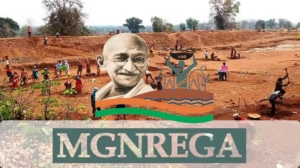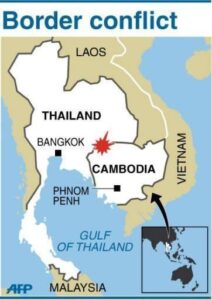India boasts a rich tapestry of cultural and natural heritage, with 43 UNESCO World Heritage Sites as of December 2024. The latest additions—Santiniketan, Rabindranath Tagore’s cultural and educational hub in West Bengal, and the Moidams (Mound-Burial System) of the Ahom Dynasty in Assam—highlight the nation’s enduring historical and cultural significance.
Latest Additions in 2024
Moidams – The Mound-Burial System of the Ahom Dynasty (Assam): Officially added on July 26, 2024, during the 46th session of the World Heritage Committee in New Delhi.
Sacred Ensembles of the Hoysala Temples (Karnataka): Featuring the renowned temples of Belur, Halebid, and Somanathapura.
Santiniketan (West Bengal): Celebrating Rabindranath Tagore’s legacy, this cultural haven was recognized during the 45th session of the World Heritage Committee in Saudi Arabia.
Nominees for 2024-25
India has also proposed several sites for future recognition:
Gingee Fort (Tamil Nadu)
Salher Fort (Maharashtra)
Charaideo Maidam (Assam)
Panhala Fort (Maharashtra)
Shivneri Fort (Maharashtra)
Additional forts in Maharashtra, including Raigad, Pratapgad, and Sindhudurg.
Key Highlights of India’s World Heritage Sites
Of the 43 recognized sites, 35 are cultural, 7 are natural, and 1 is a mixed category. These include ancient caves, temples, forts, national parks, and cities that showcase India’s diverse cultural and natural heritage. Here’s a glimpse into some prominent sites:
Taj Mahal (Agra, 1983): A global symbol of love, built by Emperor Shah Jahan.
Ajanta and Ellora Caves (Maharashtra, 1983): Marvels of rock-cut architecture showcasing Buddhist, Hindu, and Jain art.
Kaziranga National Park (Assam, 1985): Home to two-thirds of the world’s one-horned rhinoceroses.
Hampi (Karnataka, 1986): The ruins of the Vijayanagara Empire, reflecting exquisite Dravidian architecture.
Western Ghats (2012): One of the world’s “Hottest Biodiversity Hotspots,” spanning multiple states.
Santiniketan (West Bengal, 2023): A testament to Tagore’s vision of a cultural and educational utopia.
Complete List of UNESCO World Heritage Sites in India (2024)
Complete List of UNESCO World Heritage Sites in India (2024)
| S.No | Name of Site | Year | Location |
|---|---|---|---|
| 1 | Ajanta Caves | 1983 | Maharashtra |
| 2 | Ellora Caves | 1983 | Maharashtra |
| 3 | Agra Fort | 1983 | Agra |
| 4 | Taj Mahal | 1983 | Agra |
| 5 | Sun Temple | 1984 | Orissa |
| 6 | Mahabalipuram Monuments | 1984 | Tamil Nadu |
| 7 | Kaziranga National Park | 1985 | Assam |
| 8 | Keoladeo National Park | 1985 | Rajasthan |
| 9 | Manas Wildlife Sanctuary | 1985 | Assam |
| 10 | Churches and Convents of Goa | 1986 | Goa |
| 11 | Monuments of Khajuraho | 1986 | Madhya Pradesh |
| 12 | Monuments of Hampi | 1986 | Karnataka |
| 13 | Fatehpur Sikri | 1986 | Agra |
| 14 | Elephanta Caves | 1987 | Maharashtra |
| 15 | Great Living Chola Temples | 1987 | Tamil Nadu |
| 16 | Pattadakal Monuments | 1987 | Karnataka |
| 17 | Sundarbans National Park | 1987 | West Bengal |
| 18 | Nanda Devi & Valley of Flowers National Park | 1988 | Uttarakhand |
| 19 | Monuments of Buddha | 1989 | Sanchi, Madhya Pradesh |
| 20 | Humayun’s Tomb | 1993 | Delhi |
| 21 | Qutub Minar and its Monuments | 1993 | Delhi |
| 22 | Mountain Railways of Darjeeling, Kalka Shimla & Nilgiri | 1999 | Darjeeling |
| 23 | Mahabodhi Temple | 2002 | Bihar |
| 24 | Bhimbetka Rock Shelters | 2003 | Madhya Pradesh |
| 25 | Chhatrapati Shivaji Terminus | 2004 | Maharashtra |
| 26 | Champaner-Pavagadh Archaeological Park | 2004 | Gujarat |
| 27 | Red Fort | 2007 | Delhi |
| 28 | Jantar Mantar | 2010 | Delhi |
| 29 | Western Ghats | 2012 | Karnataka, Kerala, Tamil Nadu, Maharashtra |
| 30 | Hill Forts | 2013 | Rajasthan |
| 31 | Rani Ki Vav (The Queen’s Stepwell) | 2014 | Gujarat |
| 32 | Great Himalayan National Park | 2014 | Himachal Pradesh |
| 33 | Nalanda | 2016 | Bihar |
| 34 | Khangchendzonga National Park | 2016 | Sikkim |
| 35 | Architectural Work of Le Corbusier (Capitol Complex) | 2016 | Chandigarh |
| 36 | The Historic City | 2017 | Ahmedabad |
| 37 | Victorian Gothic and Art Deco Ensembles | 2018 | Mumbai |
| 38 | The Pink City | 2019 | Jaipur |
| 39 | Kakatiya Rudreshwara (Ramappa) Temple | 2021 | Telangana |
| 40 | Dholavira | 2021 | Gujarat |
| 41 | Santiniketan | 2023 | West Bengal |
| 42 | Hoysala Temples | 2023 | Karnataka |
| 43 | Moidams | 2024 | Assam |
This table provides an organized overview of all 43 UNESCO World Heritage Sites in India as of 2024.
What Are UNESCO World Heritage Sites?
These sites are recognized for their outstanding universal value, deserving protection for future generations. Established under the 1972 UNESCO Convention, these landmarks celebrate humanity’s creative genius, cultural traditions, and ecological diversity.
Criteria for Selection
A site must meet one or more of the following:
Represent human creative genius.
Exhibit significant interchange of values.
Bear testimony to a cultural tradition.
Represent a significant stage in human history.
Demonstrate traditional human settlement patterns.
Be associated with eve
nts of universal significance.
Showcase natural phenomena or beauty.
Reflect major stages of Earth’s history.
Highlight significant ecological processes.
Preserve critical habitats for biodiversity.
India’s World Heritage Sites not only represent the country’s rich history and biodiversity but also offer a profound glimpse into its cultural soul. Whether you’re an avid traveler or a heritage enthusiast, these sites are a must-visit!






